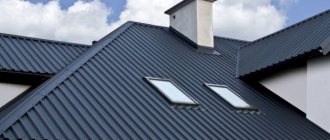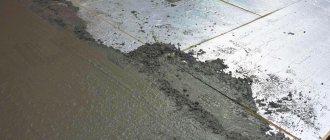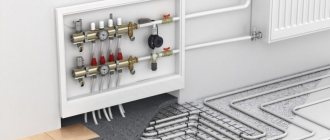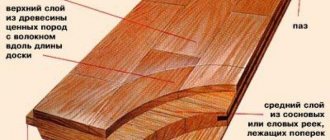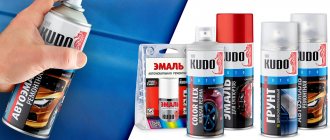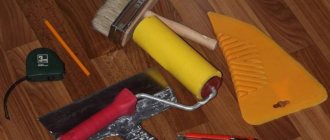The correct connection of a metal pipe with a polypropylene pipe becomes the key to the fact that the system will work without interruption, with maximum reliability.
How to connect polypropylene pipes with metal ones?
Situations when it is necessary to connect a polypropylene product with a metal one are not so rare.
To understand how to properly connect polyethylene pipes with polypropylene or metal, watch the video lessons posted in this article.
There are several ways to correctly make a connection.
- With thread. Suggests they use fittings that look like couplings. One end is provided with a metal thread, and the other with a cut, with perfect smoothness.
- Flange type. When bolts with studs tighten the structures of the flanges themselves. They will help you understand how to connect polypropylene pipes; the videos will make the process more visual.
Seven ways to connect polypropylene pipes without soldering and welding with your own hands - step-by-step instructions with photo and video lessons.
Video description
This video shows the installation of a flange adapter (FFRK) - with pressure rings, which allows you to do without welding and threading:
Clip pad
Another fairly simple way to connect two pipes of the same diameter without welding or threading is an outer ring.
The pipes are brought together, a rubber sealing gasket is applied to them, which in turn is clamped with a collapsible clamp - tightened with four or six bolts.
You can also make tees and branches using this method. To do this, one of the parts of the clip must have the appropriate fastening, as in the figure below.
Threadless pipe connection + tee Source lennevaproekt.ru
We install threaded fittings
These types of connections are relevant if pipes of medium and small diameter are taken together. Their size should not exceed 40 millimeters.
The threads on the fittings are present not only on the inside, but also on the outside. It is needed to secure the metal sides and ends to the parts. The smooth cut of the coupling is located on the opposite side. It involves soldering plastic.
The fittings are installed using simple technology.
- The workpiece is cut at a right angle, in the place where the joint is expected to be located. Solid oil is used to process the edges. Then they take the thread cutter and finish processing.
- After this, they must be cleaned so that there are no metal shavings. For the future joint, it is impossible to do without sealing, which involves the use of FUM tapes or tow.
- The fitting structure is screwed onto the part with a cut, with preliminary preparation. This doesn't require too much effort. The part may crack if you press too hard on it with tools.
- The smooth cut is screwed onto a plastic pipe. It is easy to understand how to connect a polyethylene pipe to a polypropylene pipe.
The material for sealing is laid out along the thread so that it covers at least 1-2 turns.
Video: how to connect a pipeline
Transition from iron pipe to polypropylene, replacement of a section of pipe
Flange connections
This method is based on joining a steel pipe and a plastic insert with a detachable device - a flange. A flange in the form of a sleeve is inserted into the metal pipe, and a slip-on flange with a transition to plastic is attached to it using bolts. This is done as follows:
- The insertion location is determined and a neat cut of the pipe is made. Irregularities at the cut site must be processed with a grinder.
- The flange in the form of a sleeve is inspected, sharp edges are smoothed with a file. This precaution will protect the plastic pipe from damage. Only after this the flange is installed in place.
- Another flange with an adapter for polypropylene pipes is bolted to it. A rubber gasket is installed at the connection point. The mounting bolts are tightened without unnecessary effort.
Any person can make pipe connections from different materials. But if you are not sure that you can do the job efficiently, it is better to contact a plumber.
Installing flanges
This option is more suitable for those who work with large diameters. Thanks to it, during operation there are fewer problems with access if cleaning is necessary.
The flanges look like flat disks supported on straight bars.
Installation of pipes in the system consists of several stages.
- It all starts with creating an even cut at the ends of the workpieces. The main thing is that there is no dust or shavings inside.
- Then they proceed to putting the flanges on the sections prepared in advance. We place rubber gaskets between the places with the discs.
- Bolts are used to connect flanges to each other. It is important that the tightening is uniform, without applying much force.
It is recommended to separately ensure that the edges of the rubber gaskets do not protrude more than 10 millimeters.
Summing up
As can be seen from the above, the installation procedure in both ways is quite simple. First of all, it is important to pay attention to the correspondence of the sizes of pipes and joint elements. You should also carefully inspect all elements for flaws, cracks and burrs. Any damage will negatively affect the reliability of the structure, resulting in the need to re-repair the water supply after some time.
And the last point is to strictly follow the instructions. All work must be done step by step, without neglecting the stages and following the recommendations. Particular attention should be paid to sealing agents, and in no case should you forget about them, since they are an important component of the entire plumbing structure. You shouldn’t apply them in large quantities either – the pipes won’t thank you for it.
How to solder structures?
Polypropylene blanks cannot be joined without a special welding machine, which is called an “iron”. It works when connected to a regular electrical network.
It is better to purchase the materials themselves with a small reserve, in case of possible errors.
The process consists of several stages. This will allow you to understand how to solder a polypropylene pipe.
- Several cuts are made where the joints will be located in the future. Thorough cleaning of the ends is also required. Special marks are made on their surface with a marker. They indicate at what depth the parts inside the heating apparatus should be located. The temperature of the soldering iron should be at least 270 degrees.
- Strictly perpendicular connection of nozzles with a hot soldering iron. The same is done with the ends of other connections.
- Wait 10-15 seconds until melting is complete. Then they get rid of the attachments, and the parts are connected again. They are lightly applied to each other, but turning is unacceptable.
- The parts to be joined must be left in one position for some time until they cool down.
Video: learning how to solder
How NOT to solder polypropylene pipes!
Socket soldering is an option that is used for pipes with a diameter of 40 mm and larger. But it is recommended to trust such work to specialists, only they know about all the features.
It is better to heat the connecting elements from the inside, and the pipes from the outside. Then it will be easier to create nodes that are highly durable. Otherwise, small tubercles form inside, which reduces patency. Blowing out the structure will allow you to forget about such problems.
Video description
This video shows how to make a fitting connection
Gebo fastener
One of the popular ways to connect pipes without welding and threading is Gebo fasteners. It is well suited for joining both homogeneous and pipes made of different materials, for example, for joining cast iron and steel pipes with plastic, or with each other.
Essentially, this is a clamp fitting that comes in single- and double-sided (more common). One of the varieties of Gebo is made in the form of a tee, with which you can make both connections and adapters. The fastener consists of a body, a clamping ring, seals on the sides, as well as a cone nut, which compresses all parts together.
Such a system is quite simple to install, even if you have no plumbing experience:
- It is necessary to sand the future joints.
- Next, you need to put on the nut and rings in a certain sequence: clamping, pressing and sealing.
- Then the Gebo mount itself is put on and clamped with a nut.
Application of Gebo fasteners Source yandex.net
Features of the “cold” method
It is assumed that compression fittings are used in this case. As far as tools go, a regular crimp wrench will suffice.
The installation process looks like this.
- As usual, work begins with cuts at the ends. After this, you need to check whether the edge is in a perpendicular position. Cleaning the ends from burrs is carried out with a wire wool or fine-grained sandpaper.
- The coupling nut is placed on one end of the pipe. The thread should go to the fitting. Then they move on to using compression rings. They also go to the fitting side, but with long bevels.
- The fitting is threaded onto the surface of the end prepared in advance. The part is inserted into the inner surface until it stops.
- After this, the coupling nut is fully tightened. The system is checked for leaks.
How to properly solder polypropylene pipes with your own hands
What points should you pay attention to when welding?
Professional soldering irons are quite expensive. It is better to purchase inexpensive “amateur” options if the work is not constant. These usually have several running attachments at once. You can rent tools. This will not affect the quality of the final connections.
A stable stand has become a must-have element for almost all soldering irons. Even professionals make connections only if the tool remains stable. It takes no more than 10-15 minutes to heat up the working surfaces.
The connecting nozzles have only 2 parts - the drone, on which the coupling is heated, and also the sleeve, inside of which there is a pipe with the drone.
The nozzle parts are installed on the soldering iron when it is still cold. And only after this the device is connected to the network. Work should begin only when the indicators go out.
How to make the transition from a metal-plastic pipe to a polypropylene pipe
This occurs during the second heating cycle. But the heating time is determined by several factors:
- Type of pipe.
- Wall thickness.
- Diameter of the structure.
All these values are usually indicated in the table that comes with soldering irons.
Properties and scope of application of metal-plastic pipes
The most common types of pipes are plastic or metal. Each of them has its own pros and cons. Metal pipes are more resistant to mechanical stress, less susceptible to adhesion, but lack the property of corrosion resistance. You can, of course, use copper communications, but such material is very expensive. Plastic, in turn, is resistant to corrosion, and its price is much lower than its metal “counterpart”. But less resistance to external damage.
Taking into account the advantages of the two types of pipes, engineers created a metal-plastic structure. This is a kind of smooth transition from metal to plastic. The design of the product is very simple: an aluminum tube is coated inside and outside with polyethylene. Combining the advantages of two materials, this type of design has acquired the following advantages.
The inside of the product is very smooth, which prevents various impurities present in the water from settling on the inner walls of the water supply. Both the inner and outer layers of plastic prevent the appearance of condensation on the metal part, so aluminum is protected from oxidation and exposure to external “irritants”. The properties of aluminum do not affect the resistance to internal pressure and thermal characteristics of the product, therefore the characteristics of the pipes are primarily determined by the properties of the plastic used.
The task of the metal layer is to compensate for expansion due to heating, as well as to eliminate oxygen diffusion. The absence of diffusion allows the material to be used in the manufacture of heating systems; otherwise, heating boilers, radiators and pumps would be subject to negative oxygen effects.
In the production of MP products, a special glue is used, the composition of which is kept secret by manufacturers. This composition glues the plastic and metal layers into one whole. But it is the glue layer that becomes the “Achilles heel” of such pipes. Over time, the adhesive layer may lose its elasticity, resulting in delamination of the pipe and leakage in the places where the connection was made. Also, such a breakdown can occur as a result of a sudden change in temperature, for example, after cold water passes through a water supply system immediately after hot water. In such situations, the plastic layer simply does not have time to take on a new shape after the metal layer.
Despite the presence of aluminum in their design, metal-polymer products are quite flexible. This parameter is achieved by reducing the thickness of the metal layer, and this does not in any way affect the versatility of the material. But when bending, you need to be extremely careful, because the metal layer can simply burst at the bend.
Based on all the described properties, the metal-plastic pipe can be used in almost all areas of use. MP type communications can be found in hot and cold water supply; with their help, various heating systems are created. In addition, resistance to aggressive chemical liquids allows the pipes to be used in various production plants.
